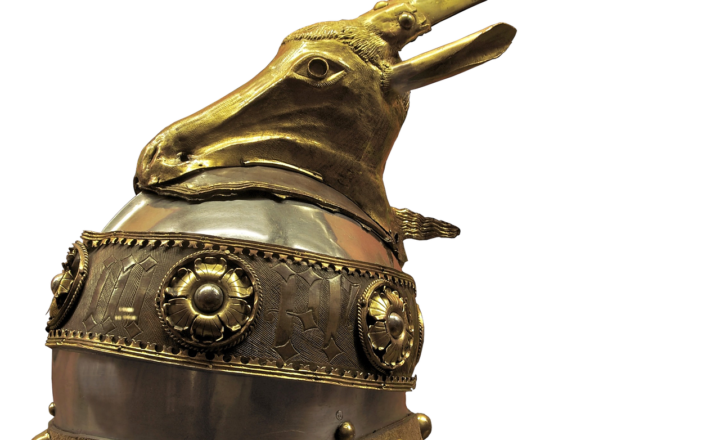How Ancient Warriors Used Unique Weapons and Tactics to Defend Their Kingdoms Against Great Odds
November 17, 2024

Throughout history, the resilience and ingenuity of ancient warriors have been tested by the greatest of odds. These soldiers were not only defenders of their land but also innovators of warfare, using unique weapons and impressive tactics to overcome their enemies. Whether it was the phalanx formations of the Greeks, the siege technologies of the Romans, or the guerrilla tactics of various tribes, ancient warfare illustrates a fascinating tapestry of courage and strategy.
1. The Context of Ancient Warfare
War in ancient times was not merely about territory; it encompassed the defense of cultural identities, resources, and the very survival of civilizations. As the population of tribes and kingdoms grew, so did the conflicts over land and resources. Cultures developed unique military strategies tailored to their geographic context, societal structure, and available technology.
Warriors became not only fighters but leaders who inspired their comrades through strategy and valor. To understand how these warriors defended their kingdoms, we must recognize the innovative techniques and weapons they employed.
2. Unique Weapons of Ancient Warriors
The ingenuity of ancient warriors can be exemplified through their weapons. Here are a few notably unique examples:
- The Complicated Catapult: The ancient Greeks were pioneers of siege warfare, inventing devices that could hurl stones and incendiaries at enemy walls. The also innovative Greek ‘onager’ was a type of catapult that utilized torsion power, allowing for precision attacks on fortifications.
- The Trident: Used prominently by Roman gladiators, this three-pronged spear was designed for both thrusting and hooking an opponent, allowing for a multifaceted approach in combat that could quickly take enemies by surprise.
- Mycenaean Swords: These bronze weapons featured unique leaf-shaped blades, which made them highly effective in close combat, designed not only for slashing but also for thrusting, proving versatile on the battlefield.
These weapons illustrate the diverse approaches to warfare that various civilizations took, each adapting to their specific combat needs and enemies.
3. Tactical Innovations in Battle
Not limited to weapons, ancient warriors often employed creative tactics tailored to their unique circumstances. Here are some remarkable strategies:
- The Phalanx Formation: The Greek city-states utilized a military formation known as the phalanx, which involved rows of heavily armed infantrymen (hoplites) arranged in tight ranks. By standing shoulder to shoulder with overlapping shields, they formed a formidable wall that was almost impenetrable.
- The Roman Strategy of Decimation: Known for their discipline, when a Roman unit faced cowardice, one in every ten soldiers would be executed by their own comrades, a harsh tactic that instilled fear and maintained discipline.
- Guerilla Warfare of the Celts: The Celtic tribes employed hit-and-run tactics during their conflicts with Rome, utilizing their knowledge of local terrain to outmaneuver heavily armored Roman legions. Their approach made direct confrontations risky for their enemies.
Ancient tactics were as much about psychological warfare as they were about physical confrontations, embodying strategies that aimed to confound and demoralize opponents.
4. The Role of Leadership
In times of war, strong leaders emerged who could unify disparate groups and motivate warriors to fight against overwhelming odds. Leaders like Alexander the Great and Genghis Khan showcased brilliant tactical minds and the ability to adapt their strategies to the terrain and their enemy’s weaknesses. These leaders understood that a well-coordinated strategy often outweighed numerical superiority.
Leaders often motivated their troops by sharing in the hardships of battle. The speeches and actions of these figures became pivotal to morale, turning the tide of desperate situations and driving their men to victory.
5. Defense Mechanisms
Ancient warriors did not only focus on offense; they developed incredible defensive measures as well. Kingdoms often fortified their cities with walls and ramparts while training troops to defend these critical structures. Here are some notable defenses:
- The Great Wall of China: Built to protect Chinese states from invasions, this enormous structure stood as a testament to the engineering prowess and collective effort required to establish lasting defense against nomadic tribes.
- Gates and Moats: Medieval castles often employed deep moats filled with water or spikes to deter advancing pairs of enemy combatants. Gates, built of thick timber and iron, provided formidable barriers that required substantial resources to breach.
- Wall Artillery: By mounting crossbows and catapults on the walls of cities, defenders could strike back against attackers, giving them a crucial edge in defending their homes.
These developments showed how civilizations evolved not only in their approach to combat but also in how they protected themselves from it.
6. Lessons Learned and Modern Applications
The legacy of these ancient warriors and their tactical innovations speaks volumes even today. Modern military strategies often draw on lessons from history, employing combined arms tactics, technological advancements, and the importance of strong leadership. Moreover, studying the weapons and strategies of these ancient warriors provides insights into the ingenuity of human beings in the face of adversity.
As we remember the legacies of these ancient warriors, we recognize that their courage, creativity, and commitment inspired successive generations to overcome challenges – lessons that resonate through history into our present day.
Conclusion
The ancient warriors of our past faced extraordinary challenges, often against great odds. Their unique weapons and innovative tactics played a vital role in defending their kingdoms. By examining their strategies, we gain a deeper appreciation for the resilience of the human spirit and the power of ingenuity in overcoming adversity.
As we reflect on these tales from history, let’s appreciate that the courage to innovate can indeed change the course of nations.
Through understanding and honoring their legacy, we can inspire future generations to adapt and innovate in the face of their own challenges.







